Before the slated expansion plans change the face of today’s Port Said, we take readers on a tour of the once-bustling shopping destination - a city that holds delightful memories for its generations of residents. Today much of its European flavor has faded, but visitors can still witness some of its dying glory.
written and photographed by Farida Ismail
Port Said is a place where people burn cotton dolls at Easter, blow up truck-sized balloons to publicize their marriages and open up small street shops that take up half the streets where no car would dare to park.
But Port Said has not always been like this. It was once one of Egypt’s most charming cities, a beautiful port, an international commercial hub and a place where different cultures lived and learned from each other. Today, the most beautiful thing keeping it together is a few people’s remaining extreme love for it and the resolute attachment of its elderly.
[caption id="attachment_522631" align="alignnone" width="620"]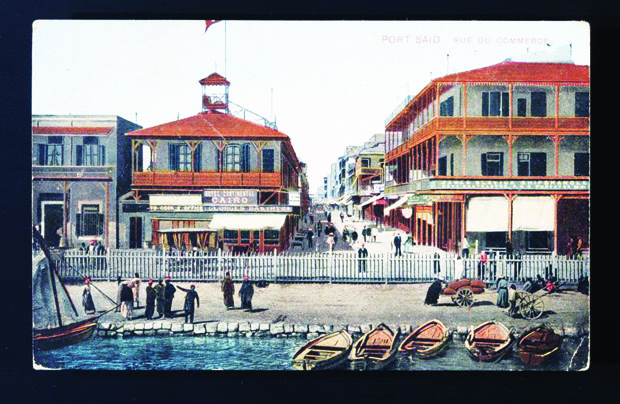 An old postcard showing Commerce Street.[/caption]
An old postcard showing Commerce Street.[/caption]
My family has lived in Port Said for four generations. My two grandmas live on the memory of what Port Said used to be for them. I listen to their stories and it’s as if they’re talking about another place - some place European but still with a predominant Egyptian culture. Despite the changes the coastal city has seen, their love for it has never lessened. They never want to forget what it once was and every inch of Port Said to them has a story behind it. And the more you drive around Port Said, the more you realize how small it is. If it weren’t for the excessive amount of cars that seemingly vastly outweighs the population of 603,787, it would take minutes to go anywhere, anytime.
[caption id="attachment_522627" align="alignnone" width="620"]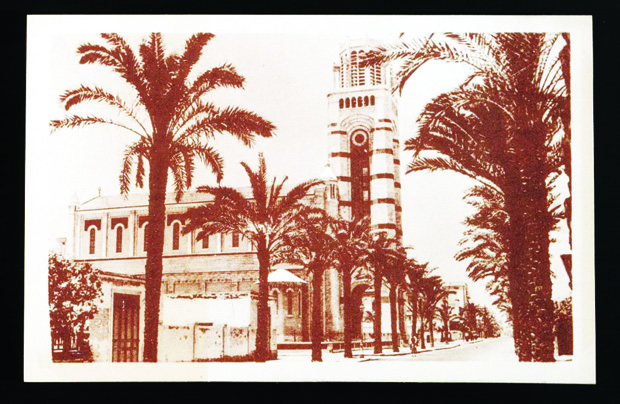 An old postcard of the French Cathedral.[/caption]
An old postcard of the French Cathedral.[/caption]
The Suez Canal started wars and built homes and made its impact on history. To me it’s simply home. I open my window and it’s right there. I didn’t really appreciate the view from my room until I grew up and understood what it really is I’m seeing. The canal is huge. I used to look out as a child and try to imagine where it ended and began but never could. Its perfectly steel blue water holds two permanent rusty green boats that are docked just behind a small villa with orange tiles that used to belong to the Suez Canal Authority.
[caption id="attachment_522633" align="alignnone" width="620"]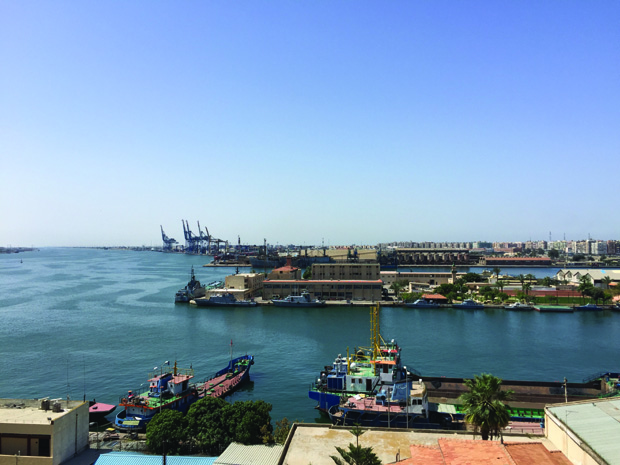 The Suez Canal.[/caption]
The Suez Canal.[/caption]
The canal’s water surrounds a tail of land featuring small houses that spreads to the city itself. From my balcony, the far left of the canal continues behind the Suez Canal Authority building, one of Port Said’s most significant landmarks, representing the canal itself. It’s a white building with three green domes, one on either side and one big one in the middle that is always visible as you drive around the area. The canal extends after that building along with its Corniche. The Corniche is a long pavement looking over the canal where lovers sit watching the view while eating leb and termis (lupine seeds). The Canal’s dock is where most of the ships can be seen, sailing into town and stopping there. Some of the ships that dock are big enough to be confused for a building from the streets looking onto it. Moving along, the canal reaches a corner where the famous De Lesseps statue lies, or rather what's left of it. Ferdinand De Lesseps was a French diplomat who developed the Suez Canal and had a concrete-based statue built in his honor on the Corniche. The statue was destroyed in a revolt during the Suez crisis in 1956. Now all that remains is a stone block missing a body and a climbing exercise for Port Saidis to enjoy during the holidays.
[caption id="attachment_522634" align="alignnone" width="620"]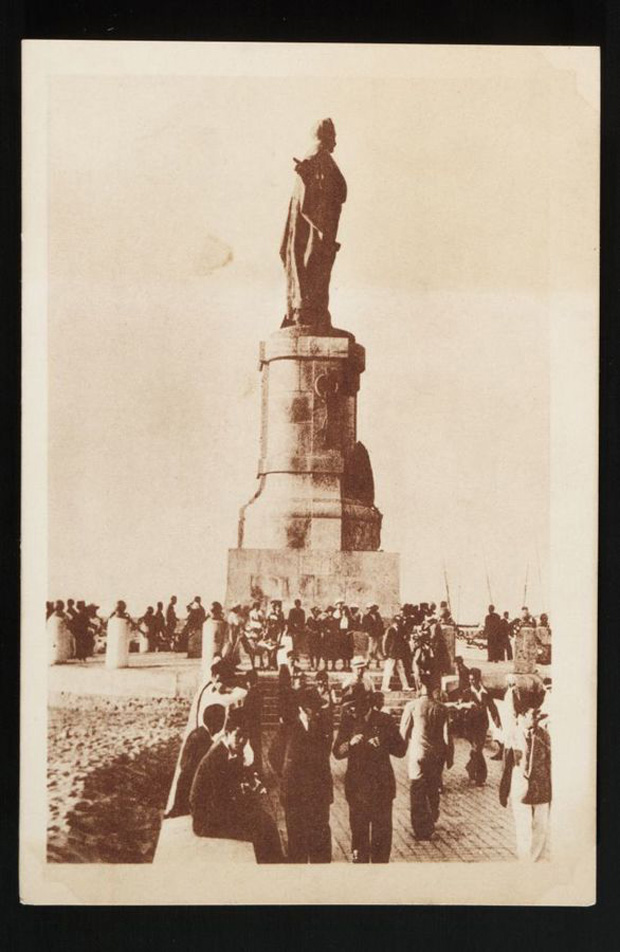 An old postcard showing the De Lesseps statue.[/caption]
[caption id="attachment_522626" align="alignnone" width="620"]
An old postcard showing the De Lesseps statue.[/caption]
[caption id="attachment_522626" align="alignnone" width="620"]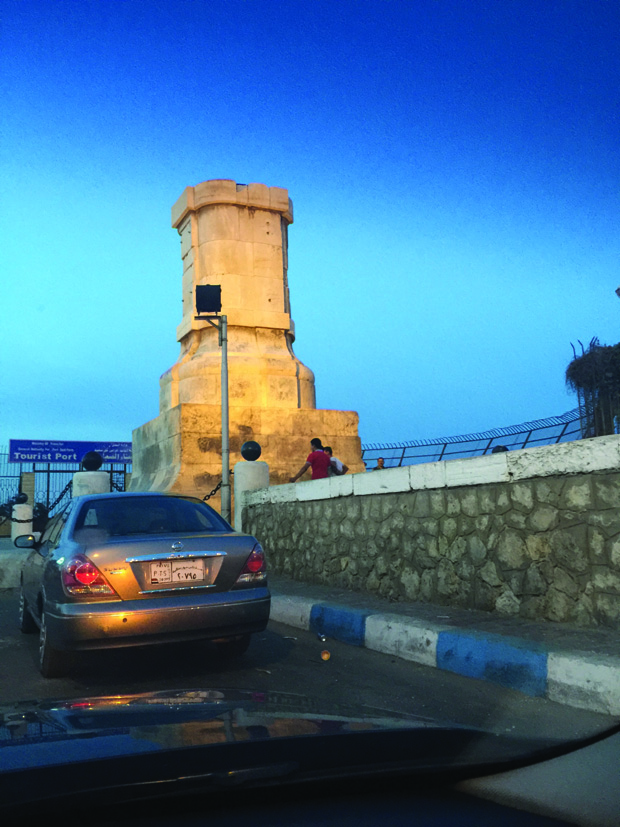 The De Lesseps statue today.[/caption]
The De Lesseps statue today.[/caption]
Port Said was once a place where European culture overweighed the city and its people. Driving along Gomhereya Street, a major thoroughfare in the main part of town, my maternal grandma tells me it used to be the classiest area in the city and people needed to be dressed in black tie just to pass through. Today, it is always busy and crowded with buyers selling shrimp, dripping water all over the sidewalk.
My grandparents went to French schools, speak fluent French and spent their early 20s working in Italian companies. The European influence is apparent in more than just the older generations, but also in the architecture and especially Port Said’s finest buildings: its churches. My grandma’s apartment has a huge balcony with an optimal location that overlooks these beautiful pieces of art. The closest one to her view is the St. Therese Maronite church with its domed sphere, striped with red bricks, and next to it a high tower with a big cross on top.
[caption id="attachment_522632" align="alignnone" width="620"]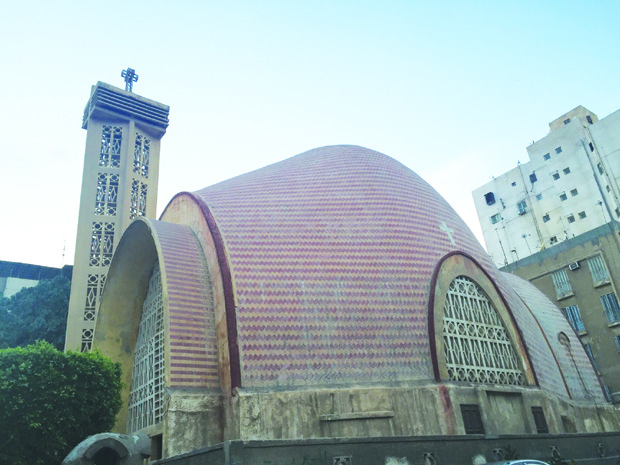 St. Therese Marionate Church.[/caption]
St. Therese Marionate Church.[/caption]
Behind it was a beautiful garden, with overgrown mango trees that climbed up to our balcony. Now most of these have been removed and the garden is home to the neighborhood’s cats. Across the street is another church, the Latin cathedral, rumored to be a replica of a church in Italy designed by Leonardo da Vinci. It catches my eye each time I pass by, and the older I get the more I realise how much it doesn’t fit with the rest of Port Said because of how foreign and medieval it looks. This cathedral also features a tower, albeit a much bulkier one than the Maronite Church’s, with a grand cross looming atop it. Protruding from the tower is the main building itself, decorated by many recurring long narrow windows all throughout the sides and the intricate detail in every different section of the pale brown building is exceptionally unique. Many residents, among them my family, fear the destruction of this church and other architecturally distinctive buildings in Port Said. Unfortunately, much of the town’s gorgeous architecture has been torn down in favor of more modern, excessively tall buildings that block most of the city’s views.
[caption id="attachment_522628" align="alignnone" width="620"]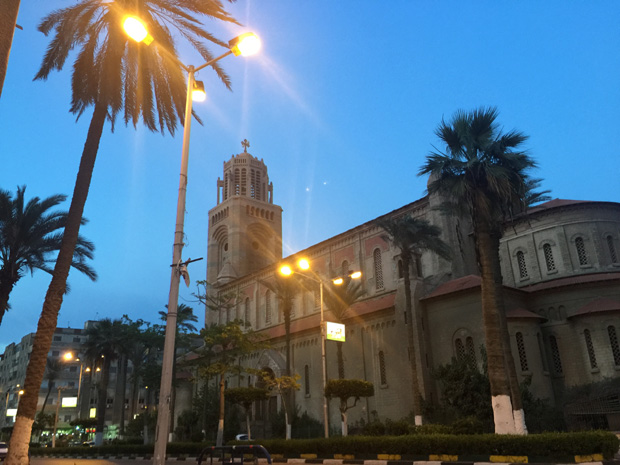 The Latin Cathedral.[/caption]
The Latin Cathedral.[/caption]
My grandma recalls how they used to see the beach from their home and now all we see out the windows are plain white apartment buildings, one after the other. Even my mom lived the days where they could see the beach from most homes. Sadly, today it is hard to catch a glimpse of the beach if you’re not really close to the shore area. My mother’s family had a small place by the coast a few miles after the main city where we used to visit every summer and go to the beach. I don’t remember the last time we went or why we stopped going, but it might have something to do with the water being less blue and more brown.
The beach was a place where actors from the Golden Age of Egyptian cinema filmed romantic scenes and citizens relaxed in bikinis on the weekends. My most recent visit was my first in almost 10 years. I went with a group of friends in April, and our families were skeptical, worried about harassment by people there, though we were fully clothed and four out of five of us were veiled. A decline in social manners may not be a problem, but cleanliness is. Even though the sand was smooth, warm and light, the water was brown and what once smelled like fresh air now smelled like rotten fish and garbage. Every time I tried to look at the horizon and appreciate the beauty of the waves lapping endlessly, I’d catch a glimpse of a man in his underwear walking around the shallow water splashing his loved one to death. We asked a guy working there to bring us some chairs and an umbrella and made the mistake of asking how much we needed to pay him. LE 40 for four chairs and an umbrella that almost fell on me three times because of the wind. The weather, though, was beautiful that day - windy and not too humid as Port Said usually is. Perfect spring weather.
The picture my grandparents paint of Port Said makes it very hard to accept what it is now. It’s not just about the European influence or the open-mindedness that disappeared over the years and generations. It’s the decline in authenticity. Most of the residents living there now are not originally Port Saidis, converging from neighboring governorates like Domyat. My mom says she used to recognize almost everyone as she walked around Port Said. Today, my grandfather says, “I don’t see people I know anymore.”
Comments
Leave a Comment